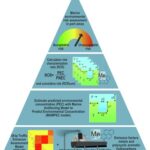日本の探査機「はやぶさ」が地球に持ち帰った小惑星サンプルに小さな塩の粒が発見されたことは、太陽系最大の小惑星集団に液体の水がこれまで考えられていたよりも多く存在している可能性を示す有力な証拠となりました。 The discovery of tiny salt grains in an asteroid sample brought to Earth by the Japanese Hayabusa spacecraft provides strong evidence that liquid water may be more common in the solar system’s largest asteroid population than previously thought.
2023-06-13 アリゾナ大学
◆特に興味深いのは、このサンプルがS型小惑星から得られたものであり、一般的には水分を含まない鉱物が多いとされるカテゴリーです。この発見は、太陽系を飛び交う多くの小惑星が従来考えられていたよりも乾燥していない可能性があることを強く示唆しています。
◆この研究結果は、地球上のほとんど、もしくは全ての水が、地球の混沌とした初期に小惑星からもたらされたという仮説に新たな推進力を与えています。
<関連情報>
- https://news.arizona.edu/story/pass-salt-space-rock-holds-clues-how-earth-got-its-water
- https://www.nature.com/articles/s41550-023-02012-x
小惑星イトカワの熱水活動 Hydrothermal fluid activity on asteroid Itokawa
Shaofan Che & Thomas J. Zega
Nature Astronomy Published:12 June 2023
DOI:https://doi.org/10.1038/s41550-023-02012-x

Abstract
Carbonaceous chondrites contain widespread mineralogical evidence for water–rock interactions, indicating that the C-type asteroids from which they are derived had active hydrothermal systems. In comparison, ordinary chondrites contain secondary minerals that are predominantly anhydrous, suggesting that their parent S-type asteroids were relatively dry. The returned particles from the Hayabusa Mission allow us to probe directly the alteration history of S-type asteroid Itokawa. Here we report nanometre-sized NaCl crystals identified in the interior of an Itokawa particle. These crystals are intimately associated with secondary albitic plagioclase, indicating coupled formation. The NaCl most likely formed through precipitation from an aqueous fluid prior to complete metamorphic dehydration on asteroid Itokawa. Our results therefore imply that asteroid Itokawa supported an active hydrothermal system and suggest that the once-hydrated S-type asteroids could have potentially delivered water to terrestrial planets.



